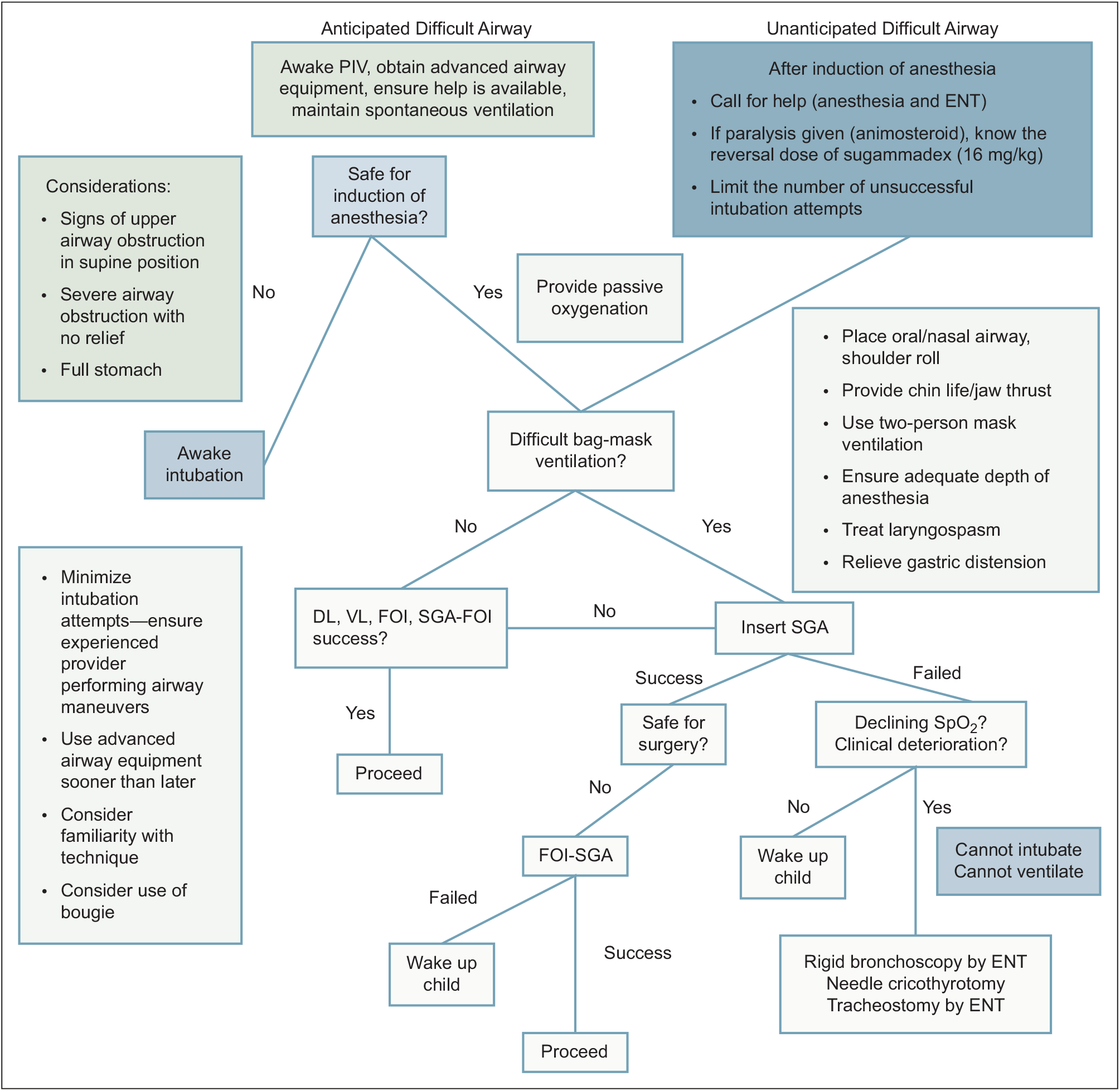Setting the Stage for Students
1. Anatomical Differences
Children’s airways are anatomically distinct from those of adults, which can complicate intubation and ventilation.
Airway Anatomy: In children, the larynx is positioned higher and more anteriorly. The epiglottis is larger and more flexible, which can obscure the view of the vocal cords and make intubation more challenging.
Size Variability: Pediatric airways come in various sizes, requiring appropriate selection of endotracheal tubes and laryngoscopes to ensure proper fit and avoid complications.
2. Physiological Considerations
Children’s physiology affects how they respond to airway management and anesthesia.
Rapid Deterioration: Children can experience rapid changes in their condition. This means that prompt and precise management is essential to prevent complications.
Higher Metabolic Rate: Their higher metabolic rate and limited physiological reserve mean that they may become critically ill more quickly if the airway is not managed effectively.
Strategies for Managing Pediatric Airway Challenges
1. Thorough Airway Assessment
A detailed preoperative assessment is crucial for anticipating and managing potential airway difficulties.
Evaluation Techniques: Use history and physical examination to evaluate the airway. Although tools like the Mallampati score are less predictive in children, they can still offer valuable insights.
Imaging and Assessment: If available, use imaging studies or advanced airway assessment tools to gain a clearer understanding of the airway anatomy.
2. Mastering Intubation Techniques
Proper technique and the ability to adapt are key to successful intubation in pediatric patients.
Direct Laryngoscopy: Be aware of the difficulties in visualizing the airway due to the child’s anatomy. Adjust the laryngoscope angle and apply gentle pressure to improve visualization.
Alternative Methods: Train students in alternative techniques such as video laryngoscopy and fiberoptic intubation, which can be useful when direct laryngoscopy is challenging.
3. Crisis Management and Emergency Response
Effective management of a difficult airway often requires quick thinking and the ability to perform under pressure.
Recognize Early Signs: Teach students to recognize early signs of airway obstruction or distress, and to act swiftly to address these issues.
Simulation Training: Use simulations to allow students to practice emergency airway management scenarios, helping them to develop the skills needed for real-life situations.
Key Considerations for Instruction
1. Emphasize Hands-On Experience
Hands-on practice is essential for mastering pediatric airway management. Use simulations, mannequins, and clinical scenarios to provide students with practical experience in handling difficult airways.
2. Foster Critical Thinking
Encourage students to think critically about airway management by discussing case studies and complex scenarios. This helps them apply theoretical knowledge to practical situations and develop problem-solving skills.
3. Keep Up with Advancements
Ensure that students are aware of the latest guidelines, techniques, and research in pediatric airway management. Continuous education and updates are crucial for maintaining current knowledge and skills. According to the ASA Committee on Standards and Practice Parameters (now the Committee on Practice Parameters) has been tasked with reviewing each guideline published by the various task forces every five years. Additionally, each guideline must undergo a complete revision at least every ten years
According to the text Pediatric Anesthesia, in the event of an airway crisis, a pediatric patient can rapidly deteriorate becoming hypoxic and bradycardic within seconds. A pediatric difficult airway algorithm and the tools to successfully carry out the algorithm must be readily available to prevent significant morbidity and mortality. Pediatric airway algorithms are relatively new in comparison with well-established adult difficult airway algorithms. There are numerous different pediatric airway algorithms from various pediatric and airway societies around the world. The figure below illustrates a practical algorithm for the anticipated and unanticipated difficult airway. Important characteristics of a chosen algorithm include simple and intuitive, easy to memorize and practice, and applicable to all situations.




